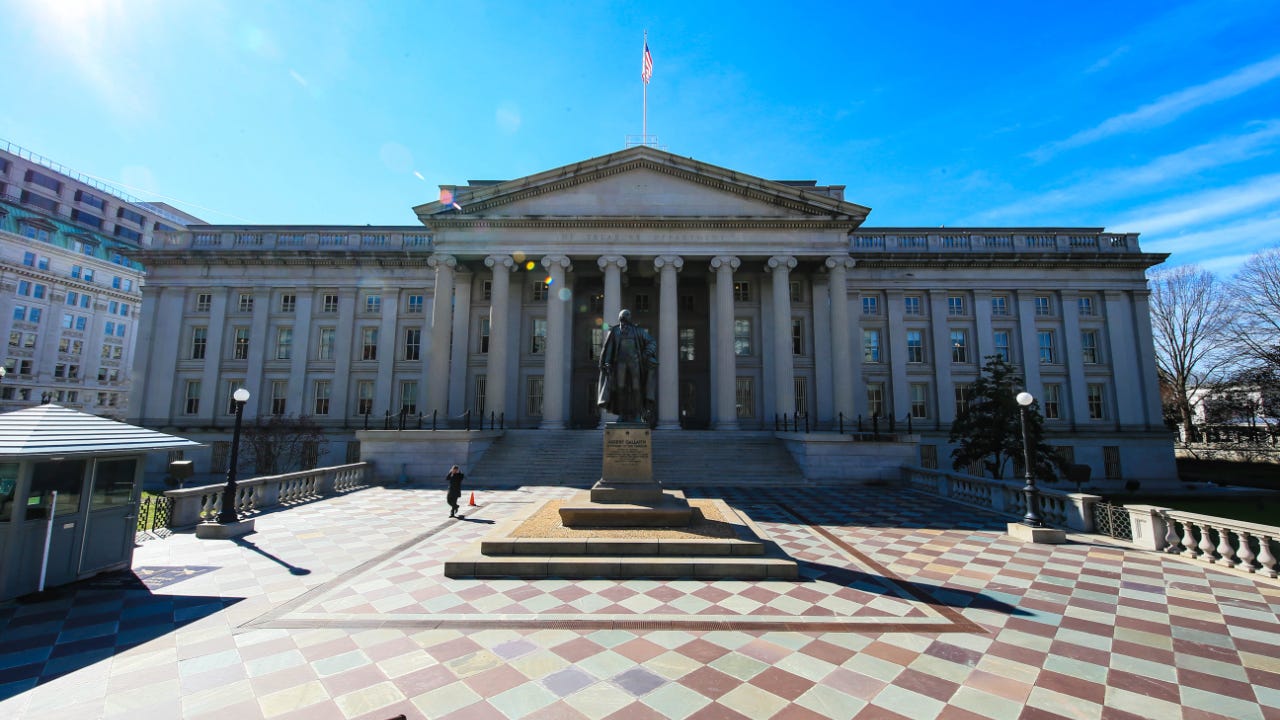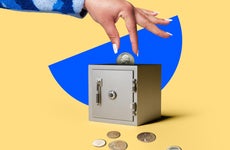How long does it take for Series EE bonds to mature?

The Bankrate promise
At Bankrate we strive to help you make smarter financial decisions. While we adhere to strict , this post may contain references to products from our partners. Here's an explanation for .
Key takeaways
- Series EE bonds issued today will mature in 20 years, and they are guaranteed to double in value over that time.
- You can let the bond continue to accumulate interest for an additional 10 years after maturity.
- Buying a Series EE bond is a low-risk way to grow your money, but it's also a relatively low-reward option: You will likely want to diversify into riskier avenues like the stock market and real estate to grow your money at a faster rate.
When looking into safe investments, many people like the idea of using government bonds, since they’re backed by the U.S. government. Generally speaking, that translates to the best kind of guarantee possible: You’re going to get your money back.
Savings EE bonds are a popular type of government bond: They earn a fixed rate of return, and only require $25 to buy. Like other savings bonds, they give consumers an opportunity to earn extra cash through compounded returns.
When you choose Series EE bonds, you have the opportunity to double your investment if you hold them for 20 years. However, the nominal rate is often less than what you’d see with the best online savings accounts. The bonds must be purchased electronically through Treasury Direct.
Let’s take a closer look at how Series EE bond maturities work, and what you can expect when you invest in them.
Maturity dates for Series EE bonds
If you purchase a Series EE bond today, you are guaranteed to earn a fixed interest rate for 20 years, which is when the bond matures. At 20 years, the government ensures that you will be paid double the face value of the bond. Although they technically mature after 20 years, these bonds actually don’t expire for 30 years. You’ll keep earning interest for an extra decade.
As long as you cash in your bond at the maturity date, you can guarantee your investment will double. So, if you buy a Series EE bond today for $25, and hold it for 20 years, you can cash it in for $50. The Treasury Department makes an adjustment to the interest earnings if needed.
Series EE bonds haven’t always taken 20 years to hit the double-value marker and mature. Here’s a rundown of historical maturity dates:
| Date of purchase | Time to maturity |
|---|---|
| January – October 1980 | 11 years |
| November 1980 – April 1981 | 9 years |
| May 1981 – October 1982 | 8 years |
| November 1982 – October 1986 | 10 years |
| November 1986 – February 1993 | 12 years |
| March 1993 – April 1995 | 18 years |
| May 1995 – May 2003 | 17 years |
| After June 2003 | 20 years |
How long to wait to cash Series EE bonds
There are a few key dates to consider when you’re thinking about cashing in a Series EE bond.
- 12 months: The absolute earliest you can cash in a Series EE bond is 12 months after you purchase it.
- 5 years: While you technically can cash it in at that 12-month marker, it’s better to avoid doing so – and to keep that bond intact for at least 4 more years. Why? Because you’ll have to forfeit 3 months of interest if you cash it in within the first 5 years.
- Your original maturity date: Since the government has offered varying timelines for its doubling guarantee, you should check your original maturity date to determine how far you are from the initial purchase date. If you want to, you can keep the money there to continue earning additional interest. Pay close attention to your interest rate, though. For example, right now a bond purchased in January of 2004 would have already doubled in value, and it will be earning an interest rate of 3.79 percent. That’s not bad, but it’s also not as high as some high-yield savings accounts and CDs.
- 30 years: Once you’re three decades past the purchase date, it’s time to cash it in and do something else with the money. You aren’t earning more interest at this point.
Interest accrual and compounding on Series EE bonds
Series EE bonds issued since May 2005 accrue interest at a fixed monthly rate, which is compounded semi-annually. If you have bonds bought prior to that, especially paper bonds, the U.S. Treasury offers a savings bond calculator that can help you figure out what you’ve earned — and what your bond is worth today.
When deciding when to cash in your Series EE savings bonds, wait until after the compounding date. You can get an idea of when to expect your interest to be added to your bond with this chart:
| Month of Series EE bond issue | Month (first day) interest will be added |
|---|---|
| January or July | January or July |
| February or August | February or August |
| March or September | March or September |
| April or October | April or October |
| May or November | May or November |
| June or December | June or December |
Series EE bond maturity examples
If you’re thinking about buying a Series EE bond today, here’s a hypothetical glimpse of what kind of return you can expect at different intervals. These assume the 2.7 percent rate the government pays for bonds between November 2023 and April 30, 2024. That rate may go up or down on May 1.
| Interest rate | Issue price | 10-year value | 20-year value | 30-year value |
|---|---|---|---|---|
| 2.7% | $100 | $130.53 | $200 | $261.06 |
| 2.7% | $1,000 | $1,305.28 | $2,000 | $2,610.56 |
| 2.7% | $10,000 | $13,052.82 | $20,000 | $26,105.65 |
Are Series EE Savings bonds a good investment?
A Series EE Savings bond could be a good investment if you’re looking for something that’s long term and low risk, since it’s backed by the Treasury and is guaranteed to double its value in 20 years. However, 20 years to see only two times your initial investment might not be enough to help you meet certain goals.
The government doesn’t just issue Series EE bonds. Series I bonds are another low-risk option, and these bonds work a bit differently. There is no guarantee to double your money; instead, these are designed to protect your money from inflation and preserve its purchasing power. Right now, Series I bonds are paying a 5.27 percent rate, although that rate moves up and down every six months based on inflation data.
While there are unique nuances between Series EE and Series I bonds, neither of them is a good idea if you’re looking for something with liquidity. They are both required to be held for at least a year, and you’ll face an interest forfeiture penalty if you need them in the first five years. For a more liquid (but still low-risk) investment, consider opening a high-yield savings account — many of these accounts are paying rates much higher than the rates on savings bonds.
Carefully consider what you plan to use the money for and its place in your portfolio. If you want a cash component and aren’t concerned about immediate liquidity, Series EE bonds might be the right choice. However, if you’re looking for growth, you’re going to need to add other assets to your portfolio and increase your risk tolerance.
—David McMillin contributed to an update to this article.
Related Articles



